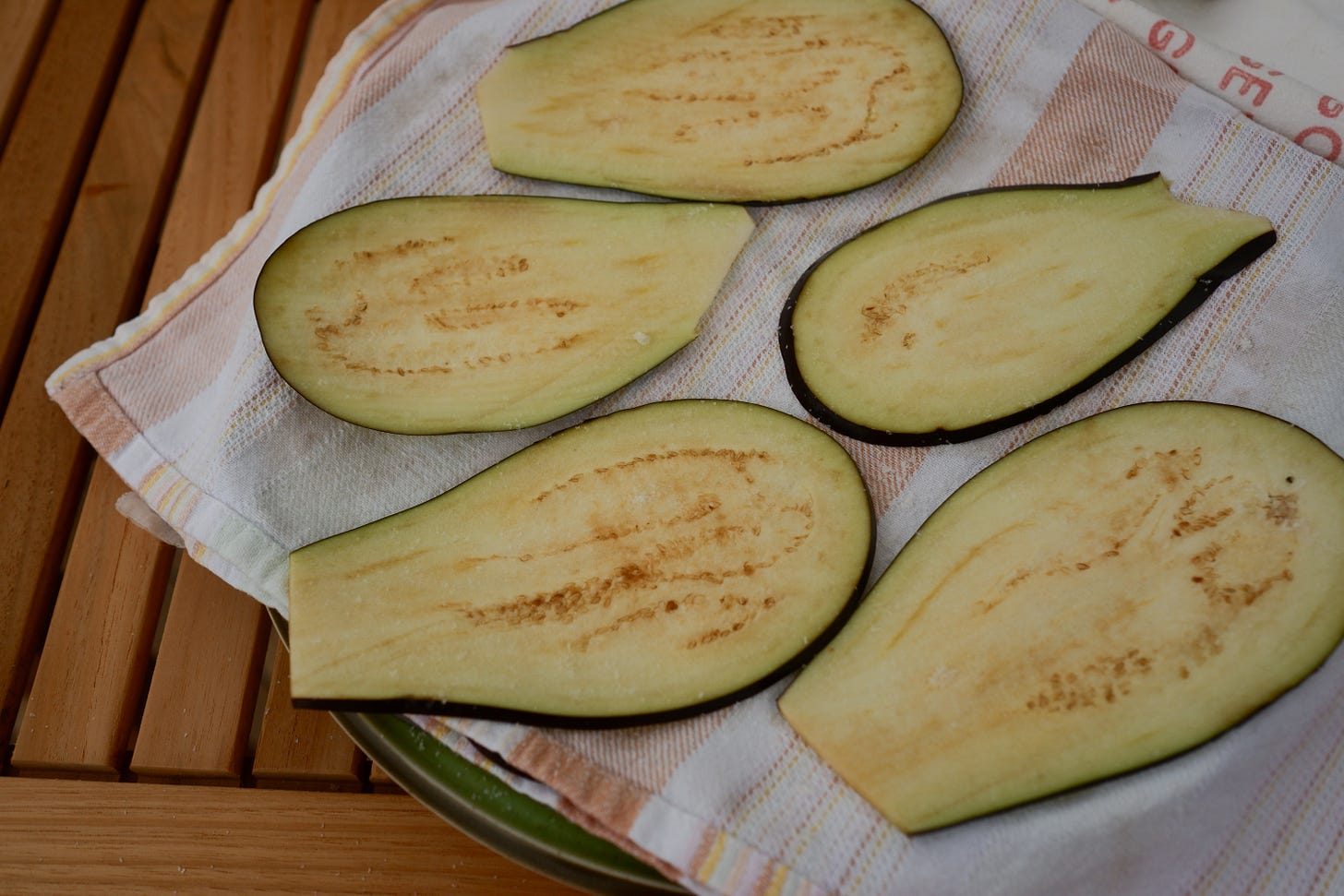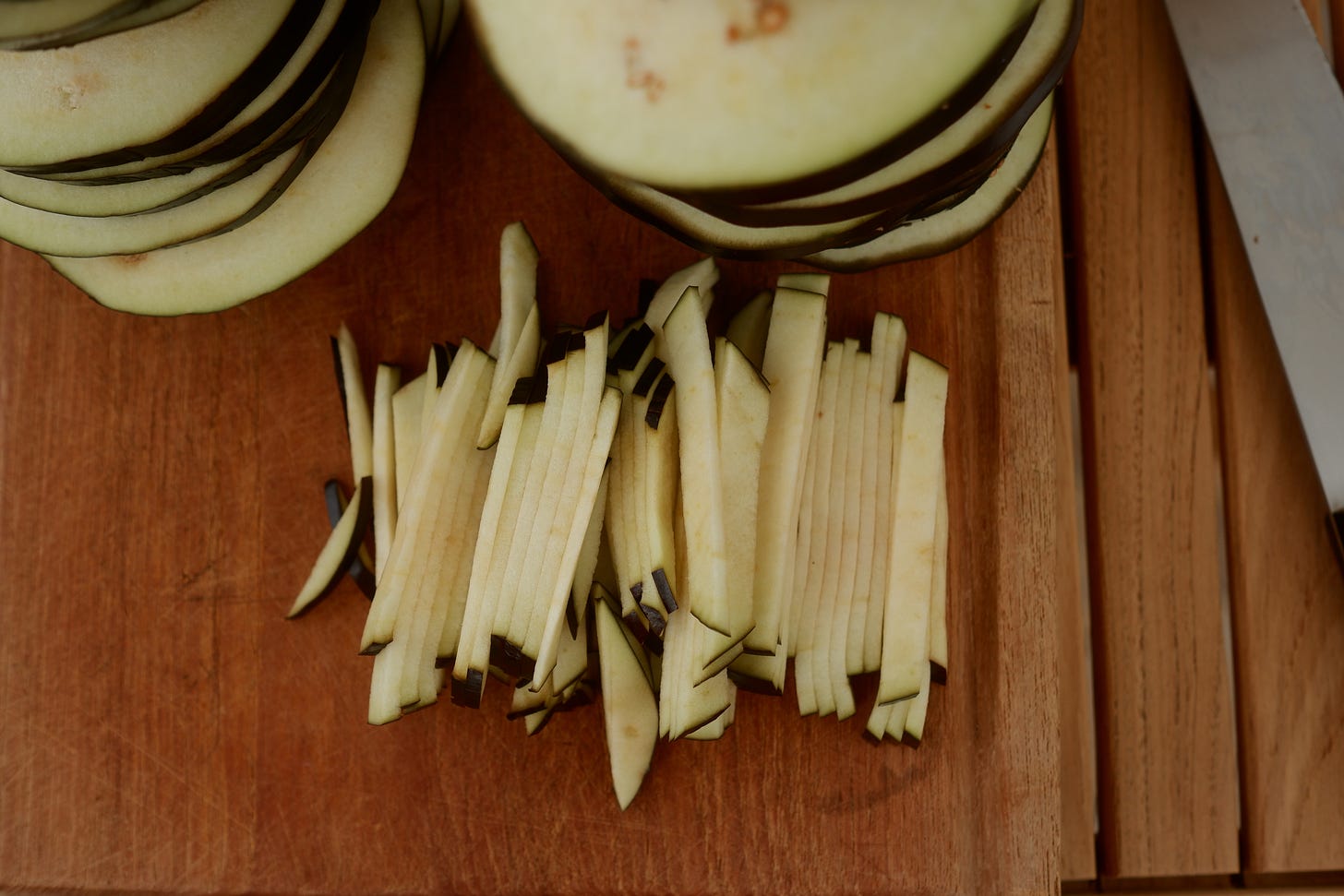Sott'Olio: A Versatile Technique in Preservation and Seasonal Denial
From eggplant to tomatoes; here's how Italians stockpile the flavors of summer.
Summer may be winding down, but don’t you dare tell us it’s over. We plan to revel in the lingering warmth for exactly as long as possible until the shortening days and cool breezes all but smack us in the face. You can’t possibly expect us to make the jump to squash soups and pots of beans overnight (though, they do sound a little cozy). We need to be eased in, keeping one toe in the colorful cornucopia of summer produce and another quietly creeping towards the autumnal flavors to come (pomegranates, persimmons, more pasta). Before we look ahead, we take one last overzealous jaunt to the market to buy far more produce than we can possibly consume within the week; but this time that’s the point. We have a different objective in mind, to preserve Summer’s bounty.
In Italy, there are many traditions around preserving produce in September. Tomatoes are milled and jarred for passata or spread onto wood boards and left to concentrate under the late-summer rays to make tomato paste. An assortment of vegetables are pickled into giardiniera, meaning “from the garden,” to be enjoyed for months after the plants have withered away. Sott’olio, or “under oil” in Italian, is another preservation method used for anything from rapini to wild sea fennel, sun-dried tomatoes to zucchini.
Stroll into any alimentari from the North to the South of Italy, and you’ll find not only cured meats and fish, but also preserved vegetable contorni (side dishes). In fact, during our most recent trip around Lazio, the only fresh produce I can remember alongside the never ending cases of cheeses and charcuterie was the plump Adriatic figs, piled high in all their seasonal glory.
When I returned from Italy at the beginning of August, I made a pit stop in Fire Island where my stepfather’s garden eggplant was—to my delight—booming. Faced with a bounty that clearly needed preserving, I stepped in. I had made marinated fresh artichokes before, and followed a similar process. But just the next day, I boarded a flight back to LA, and promptly forgot about the garden delight quietly marinating in the pantry. It wasn’t until this past weekend, when Emilia and I hosted a Roman inspired dinner party on Fire Island, that I actually had a chance to try it. During our prep day—in which we classically blow past meal times swept up in the frenzy—we busted out the melanzane sott’olio with a little anchovy and fresh oregano to top a crostino. Standing over the sink, mouths full, our gazes met with eyebrows raised. A nonverbal, “pretty fucking good, no?” We served it as the first bite of the evening.
Eggplant is one of the most common vegetables to find preserved under oil and can be presented in disks, long grilled slices, or cut into almost matchstick like strips.
In addition to topping crostini or cicchetti, you could also use this as an addition to a grain bowl or salad, or if you’re feelin’ real crazy, to top an Italian sausage. There are essentially four steps here: salt, blanch, dry, and drown. Salting is said to mellow the bitterness of certain varieties, but more importantly, it encourages your eggplant to sweat out some of their water content. This has what I like to think of as a leathering effect on the veg, allowing it to hold up to the blanching and drowning that follows, without becoming mush.
Many recipes will tell you to peel the eggplant first, which you can totally do if you have an aversion to the skin or if you prefer a homogeneous look. When I wrote this recipe, I was feeling like I wanted a pop of purple, and also a little lazy, so I left it on.
Melanzane Sott’Olio
Keep reading with a 7-day free trial
Subscribe to Cittavino & Co. to keep reading this post and get 7 days of free access to the full post archives.









